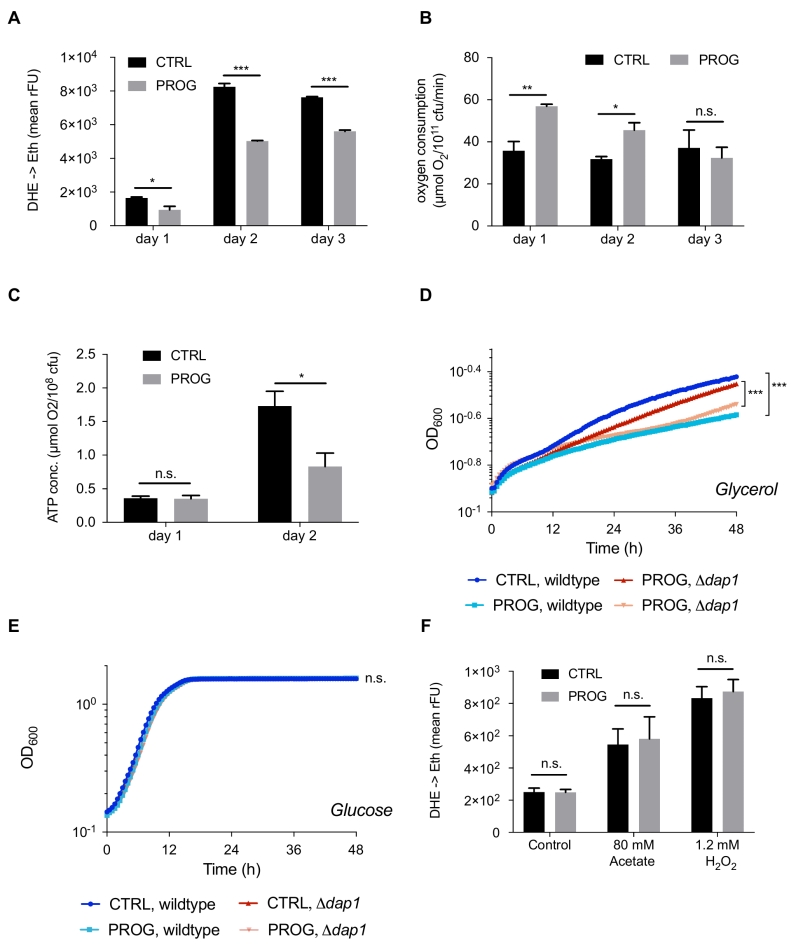Back to article: The neuroprotective steroid progesterone promotes mitochondrial uncoupling, reduces cytosolic calcium and augments stress resistance in yeast cells
FIGURE 2: Progesterone impacts energy metabolism and reduces oxygen stress accumulation in wildtype yeast. Wildtype yeast were treated with 10 µg/ml progesterone and assayed for (A) ROS accumulation via DHE to ethidium turnover, (B) oxygen consumption via respirometry, and (C) ATP production. Growth curves of wildtype as well as ∆dap1 strains, with or without progesterone treatment, on glycerol (respiratory carbon source) (D) and glucose (fermentative carbon source) media (E). ROS accumulation in rho0 yeast cells +/- progesterone (10 µg/ml) treated or untreated with H2O2 or acetate during logarithmic phase (F). All data represent mean values (n = 3-5 ± SEM). Statistical analysis was conducted using non-paired Student t-test (A-C, F) or using a two-way repeated measurement ANOVA and multiple comparison post-hoc Tukey’s test (D, E). * = p<0.05; ** = p<0.01; *** = p<0.001; n.s. = non-significant. ROS = reactive oxygen species, rFU = relative fluorescence units, Prog = progesterone, ctrl = control.

